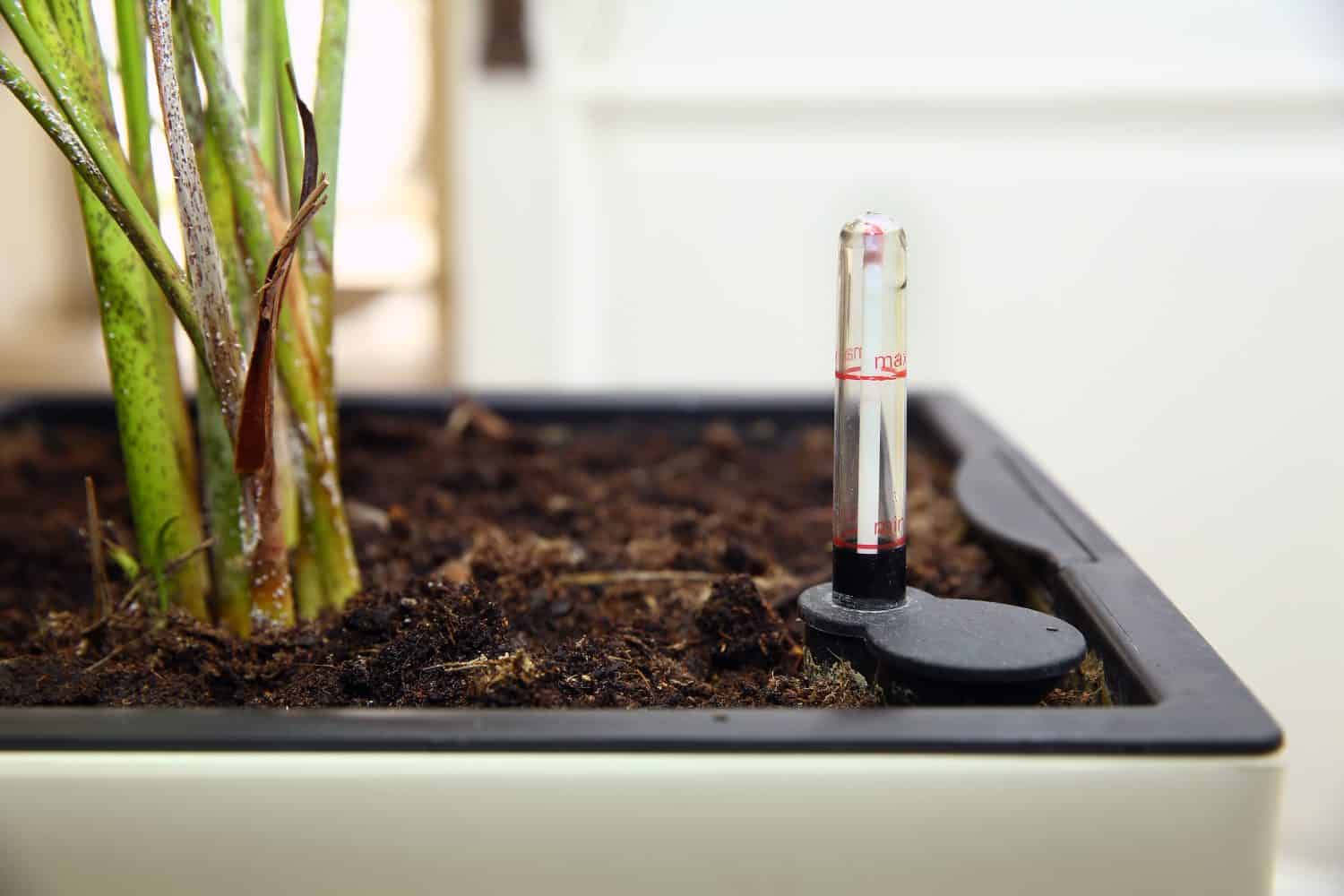Are you a plant parent considering using self-watering pots for your houseplants? If so, you’ve come to the right place! As with anything, these handy planters come with several benefits and a few drawbacks. Before purchasing one for your house, take a look through our list of pros and cons to decide if it’s right for you and your leafy green friends.
What Are Self-Watering Pots?
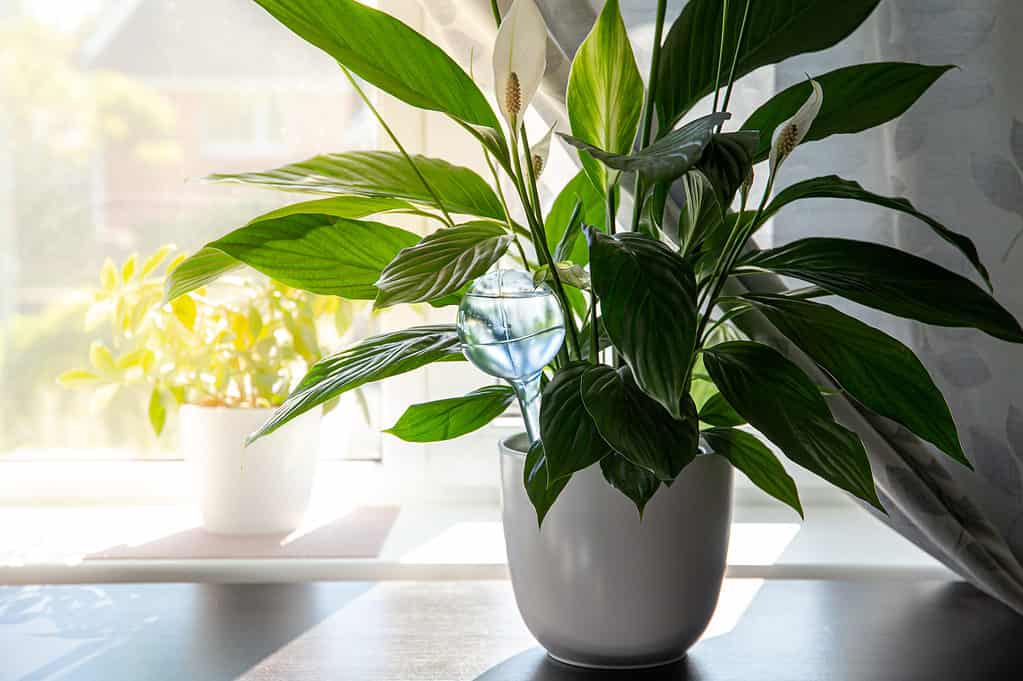
Self-watering pots operate similarly to self-watering globes, relying on the soil to draw out the water.
©iStock.com/Helin Loik-Tomson
Self-watering pots are planters equipped with a water reservoir that holds and distributes water to the plants without human intervention. The soil typically draws up water from the bottom of the planter to the roots of the plant, a process called “wicking.”
The Pros and Cons of Self-Watering Pots
There are several pros and cons associated with self-watering pots for houseplants:
The Pros of Self-Watering Pots
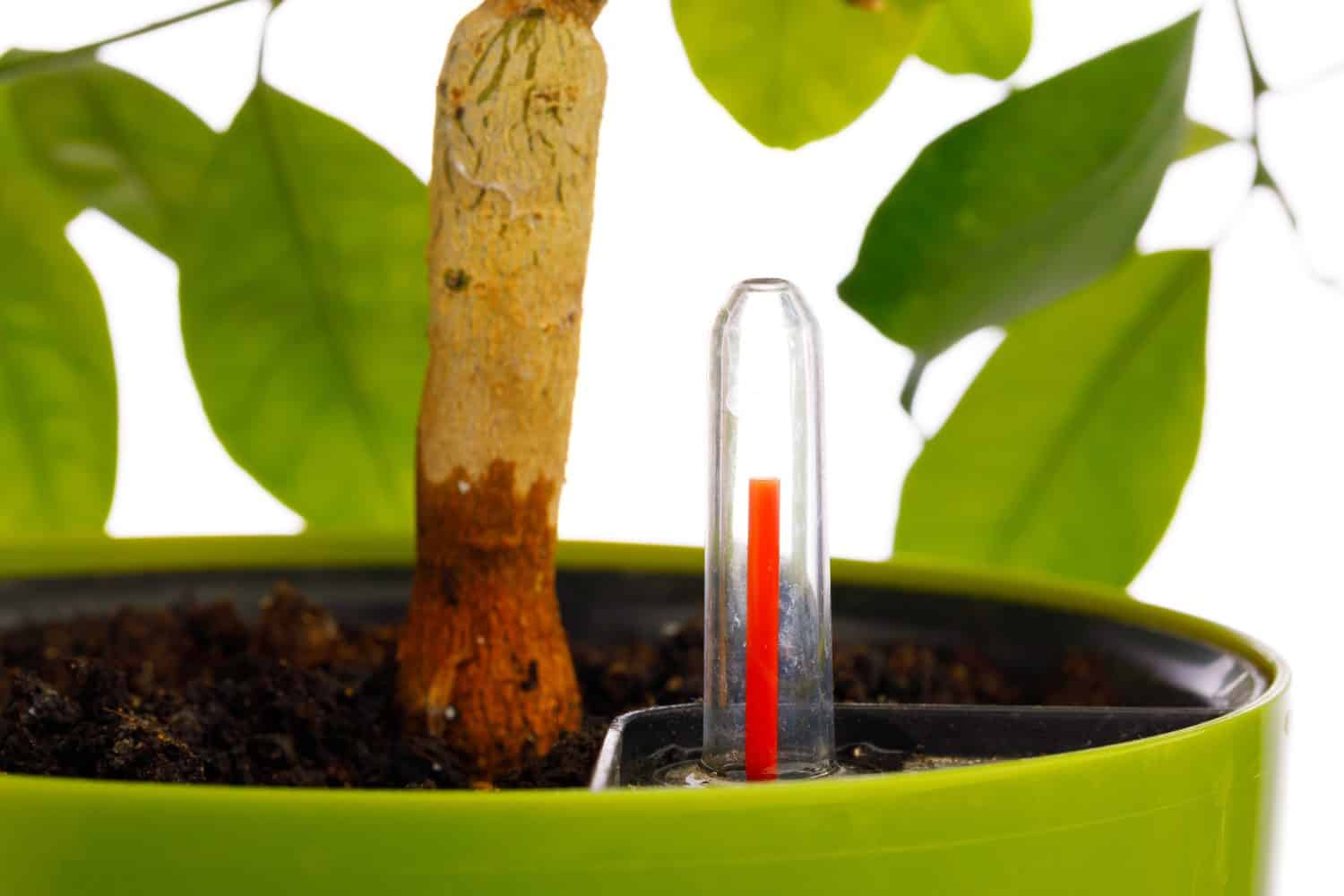
Self-watering pots are convenient, environmentally sustainable, and good for a wide variety of plants.
©nikkytok/Shutterstock.com
The pros of purchasing self-watering pots include the following:
1. Convenience
If you find yourself short on time regularly, self-watering pots may be the right solution for you. They’ll water your plants automatically so they never end up thirsty and deprived. Just remember that you’ll need to keep the reservoir filled with water or the system won’t work.
2. Ease of Mind
With self-watering pots, you don’t need to worry about going on vacation or forgetting to water your plants. As long as you fill the reservoir before you leave for an extended period, your plants should be just fine.
3. Nutrient Retention
A closed system like the ones found in self-watering pots allows the soil to retain its nutrients. This means you may no longer need to add additional organic matter to the soil – or, if you do need to add it, it remains available to your plants for a longer period.
4. Better Root Growth
Traditional top-down watering often means the deepest parts of the roots don’t get moisture. Self-watering pots work from the bottom up, which means all of the roots get water. This helps stimulate root growth and produce healthier plants.
5. No Guesswork
Self-watering pots are great for beginners or people who want to raise tricky exotic plants. These planters rely on the plants themselves to take up the water, which means they only get what they need.
6. Reduced Fungal Disease
Traditional watering methods often dampen the leaves, which can result in fungal diseases like powdery mildew. Self-watering pots only give moisture to the plant’s roots.
7. Affordability
These convenient planters vary in price, but there are plenty of affordable models out there. Just remember to purchase the type you need for your specific types of plants.
8. Environmental Sustainability
Self-watering pots help conserve water by only using what the plant needs. Too often plant parents end up overwatering their plants because they misjudge how much water they require, which not only wastes water but can damage or kill them. As a bonus, your water bill will be lower.
9. Reduced Plant Stress
Plants that lack water become stressed and eventually wither and die. Providing your plants with a consistent source of water greatly reduces their stress and stimulates their growth.
10. Style
Manufacturers are beginning to diversify the styles of the planters they sell to give consumers more choices. With the variety of options available, you’re sure to find a model that will spruce up your home as well as benefit your plants.
The Cons of Self-Watering Pots
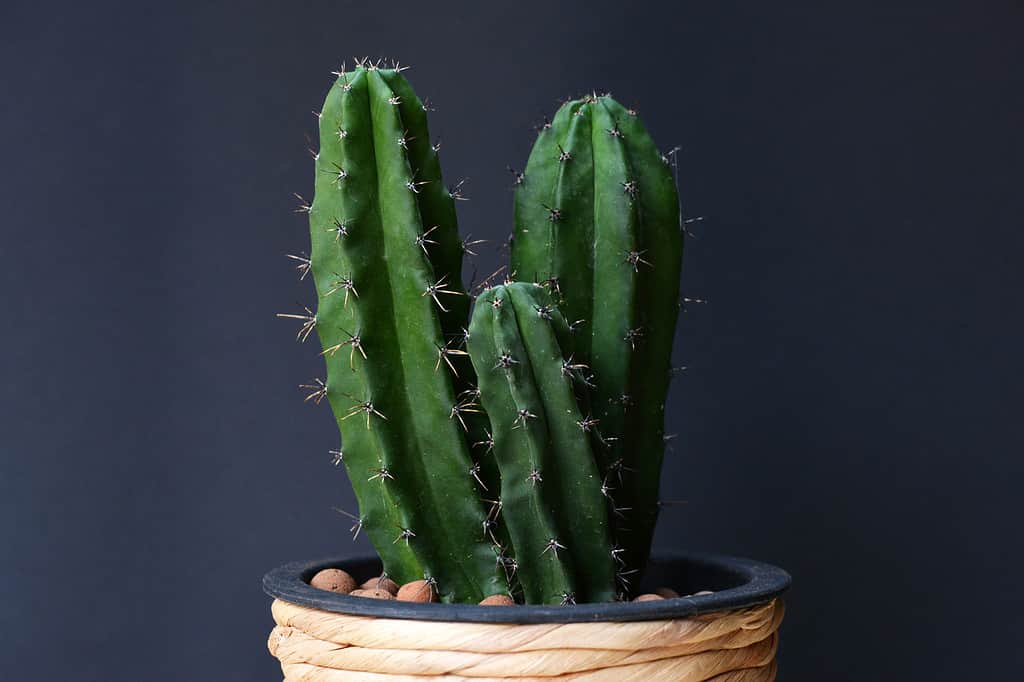
Some species of plants like succulents and cacti tend not to do well in self-watering pots.
©iStock.com/Firn
The cons of purchasing self-watering pots include the following:
1. Not Good for All Species of Plants
Not all species of plants need or should have a self-watering pot. Some types of plants that are unsuitable for this kind of planter include:
- Thirsty plants: Plants that need a lot of water may not get what they need from this type of planter. The bottom-up watering system won’t soak the soil to the extent that some species need.
- Plants that need time to dry out: Plants like succulents and cacti that don’t need much moisture could end up getting overwatered. Make sure to check on your plant’s requirements.
- Large plants: Large plants need more space to spread out and are not suitable for self-watering pots as the roots typically reach down into the pure water. This means they’re deprived of oxygen and won’t thrive.
2. Won’t Compensate for Environmental Conditions
Self-watering pots aren’t capable of detecting humid or rainy conditions. As a result, your plants may become waterlogged and start to rot. It’s a good idea to check on them if you have a rainy stretch or a period of particularly high humidity.
3. More Expensive Than Regular Planters
Although some self-watering pots are affordable, they typically cost more than a plain old planter. However, the fact that it’s a more efficient watering system helps compensate for the higher price point.
4. Breeding Ground for Mosquitoes
Mosquitoes need standing water to lay their eggs. If you don’t change the water in the reservoir often enough, it could become a breeding ground for these pesky insects.
5. Could Develop Mold or Mildew
Regularly changing the water in the reservoir is critical to avoid mold and mildew, which not only endanger your plants but also humans and pets.
Choosing Self-Watering Pots for Your Houseplants
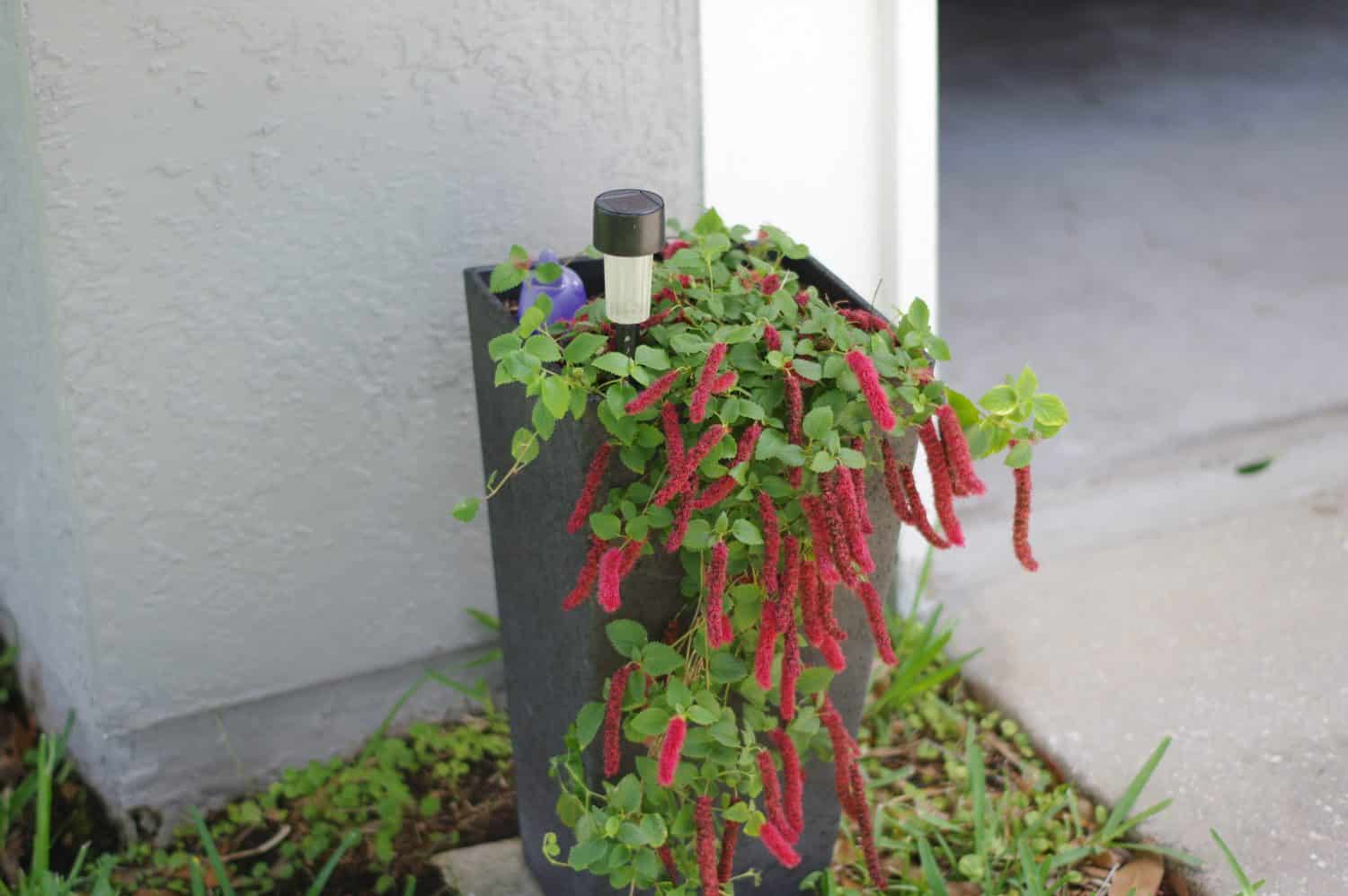
Make sure to choose a self-watering pot that’s big enough for your plants.
©CHI2JAX/Shutterstock.com
There are a few different factors to consider when choosing a self-watering pot:
- Size: Make sure to get a planter that gives your plants plenty of room to grow and thrive.
- Material: These planters are made from various materials including plastic, ceramic, and concrete. Pick a material that you’ll find easy to clean and that won’t give out on you.
- Cost and Style: Many different models exist on the market today, so don’t feel obliged to settle for a planter outside your budget. Also, you’ll want to pick a style that enlivens your home.
Summary Table of the Pros and Cons of Self-Watering Pots
| Number | Pros | Cons |
|---|---|---|
| 1 | Convenience | Not good for all species of plants |
| 2 | Ease of mind | Won’t compensate for environmental conditions |
| 3 | Nutrient retention | More expensive than regular planters |
| 4 | Better root growth | Breeding ground for mosquitoes |
| 5 | No guesswork | Could develop mold or mildew |
| 6 | Reduced fungal disease | |
| 7 | Affordability | |
| 8 | Environmental sustainability | |
| 9 | Reduced plant stress | |
| 10 | Style |
Thank you for reading! Have some feedback for us? Contact the AZ Animals editorial team.

